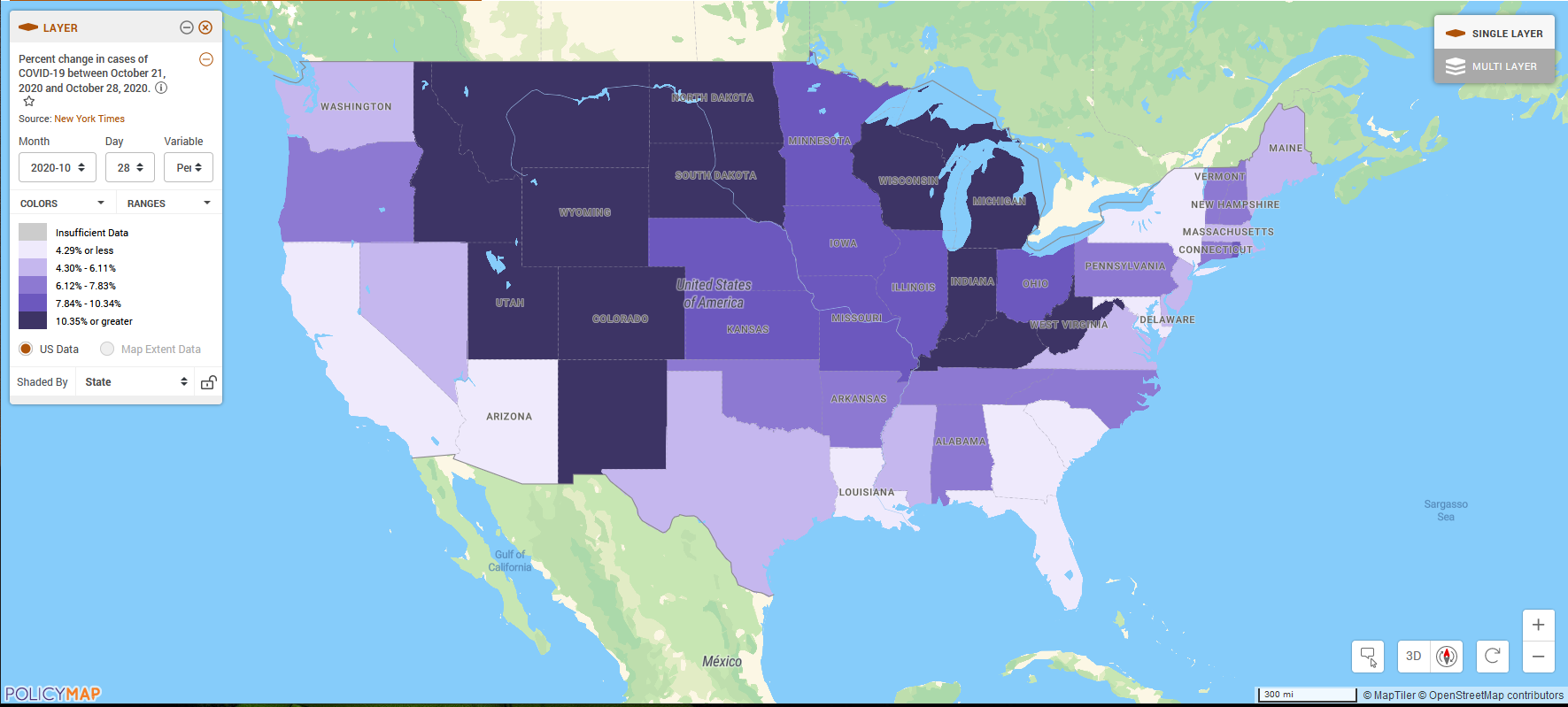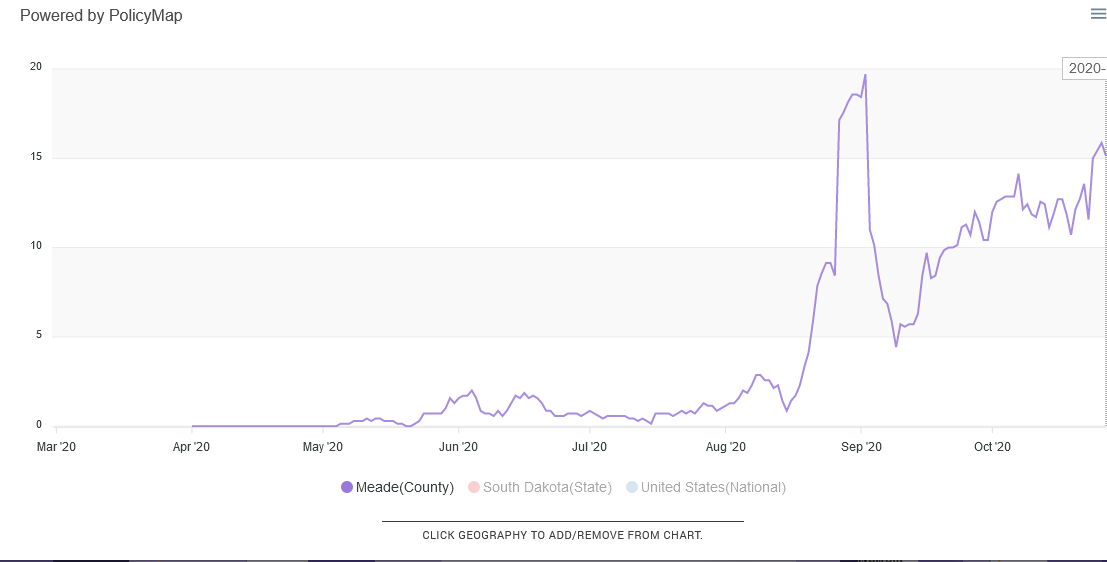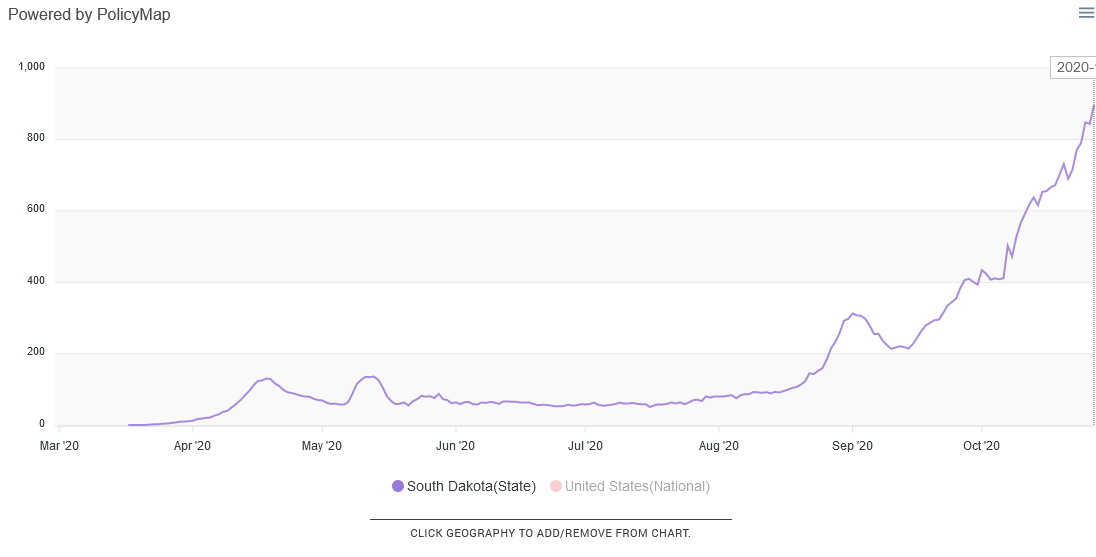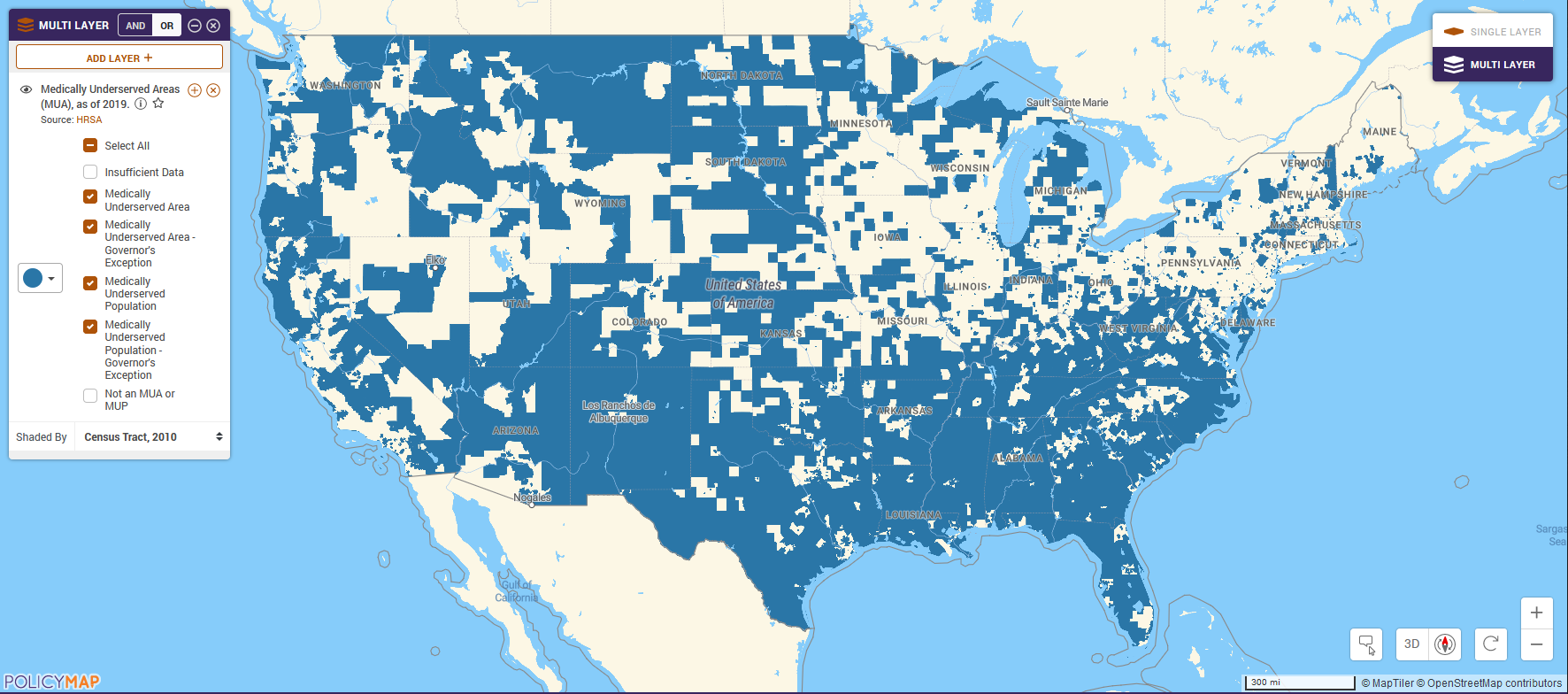COVID-19 Cases Rise in the Upper Midwest

The US is currently experiencing a rise in COVID-19 cases in rural areas across the country. Over the past week in the upper midwest, case rates in numerous counties have exceeded the national case rate. At the beginning of the pandemic, North Dakota, South Dakota, Wyoming, Wisconsin, and Montana remained more relaxed around social distancing and mask-wearing. By looking at the percent change in cases over one week, Oct 21st – Oct 28th, there’s a significant rise in these areas – particularly in South Dakota (19.85%), Wyoming (23.33%), and Montana (21.09%).

One report indicated that the rural spike connects to an August festival in Meade County, South Dakota. When looking at the chart from the timeframe (Aug 7-16) of the festival and spike in COVID cases, only days after the festival’s start, the county experienced a dramatic increase in cases. Since then, cases have only risen in Meade County and throughout the Dakotas. The seven-day rolling average trend line shows a spike in cases in September and a subsequent steady increase.


Once insulated areas of the country are now experiencing struggles similar to those felt on the east and west coasts earlier in the pandemic: overwhelmed hospitals and medical staff shortages. Using Health Resources and Services Administration data, we can identify medically underserved areas (MUAs), defined as having too few primary care providers, high infant mortality, high poverty, or a high elderly population. In rural areas, elevated COVID case counts are compounded by a decrease in medical care access, requiring patients to travel greater distances to receive care. Mapping MUAs reveals where upper mid-west policymakers may direct their attention by identifying communities with substantial health-related challenges.

As cases surge in rural areas, state and local governments must decide how to reduce the spread of COVID-19. With the weather cooling, more people will be forced inside, potentially causing more spread. Rural areas will face unique challenges related to greater distances to care and smaller facilities; it will become more critical to identify the most at-risk areas. Tracking the one-week percent changes in cases, the seven-day rolling average of reported cases, and identifying MUAs can help inform policy around COVID-19.